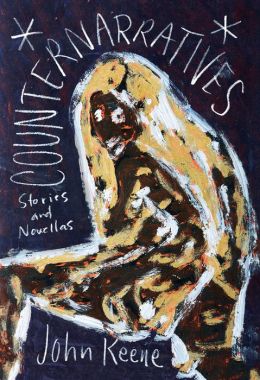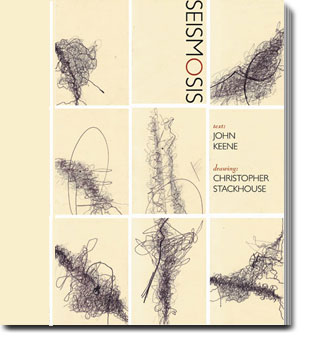 |
| Keorapetse Kgositsile |
With the new year comes saddening news, and so it was with the emails, Tweets and posts
announcing the passing in Johannesburg of Keorapetse "Willie" Kgositsile (September 19, 1938 - January 3, 2018). Kgositsile,
whom I had the immense pleasure of meeting when he toured the US back in 2012, came to Evanston under the auspices of
Northwestern University's
Poetry and Poetics Colloquium, performing his work with his longtime friend, musician
Douglas Ewart. At the time he was the
Poet Laureate of South Africa. His visit was a special event, and I felt extraordinarily fortunate to have the opportunity finally to hear him read his work in person.
As I noted in my 2012 post,
 Not only is Kgositsile one of the major poets of his country and of contemporary African literature, but during the 1960s and part of the 1970s was actively involved in the creation of the Black Art literary, cultural and political movement, and as such represents and embodies a link between the political and cultural liberation movements of Africa and the US and the Americas. The famous proto-rap group, The Last Poets, took their name from one of his poems; others who acclaimed his work included established figures like Gwendolyn Brooks, and peers like Amiri Baraka.
Not only is Kgositsile one of the major poets of his country and of contemporary African literature, but during the 1960s and part of the 1970s was actively involved in the creation of the Black Art literary, cultural and political movement, and as such represents and embodies a link between the political and cultural liberation movements of Africa and the US and the Americas. The famous proto-rap group, The Last Poets, took their name from one of his poems; others who acclaimed his work included established figures like Gwendolyn Brooks, and peers like Amiri Baraka.
He had lived in exile in the US from 1962 until 1975, and is acclaimed in part as one of the first African authors to connect in his work 20th century African and African American poetries. He also was actively involved in Harlem's Black Arts Theater, formulating a revolutionary theory of theater that sought to transform Black artists' underlying assumptions about their work and its effects on Black people. To put it another way, he was a linchpin in terms of thinking through Diasporic artistic practices during the Civil Rights, Black Arts and anti-
apartheid eras.
Kgositsile returned to South Africa, after a number of years living in other African countries, in 1990, and was active from that point forward in artistic and cultural activities. The South Africa he returned to had changed dramatically and improved considerably in some ways from the country he left, but the ongoing social, political and economic inequities remained, and he did not hesitate to criticize them in his work. In 2009, he published
Beyond Words: South African Poetics (Flipped Eye Publishing), with fellow South African poets Don Mattera, Lebo Mashile and Phillippa Yaa de Villiers.
Above and below are two poems by Kgositsile, from his 2002 collection
If I Could Sing (Kwela Publishers), via
Poetry International Web, that convey his later style, questioning approach and committed spirit. Also below are a few more links with much more information about him. Read his work, and remember him, and may he rest in poetry.
Huffington Post Black Voices: "
Poet and activist Keorapetse Kgositsile, Who Celebrated Black Arts, Dead at 79"
News24: "
National Poet Laureate and political activist dead at 79"
XXL: "
Earl Sweatshirt's Father, Famed Poet Keorapetse Kgositsile, Dies at 79"
Pitchfork: "
Earl Sweatshirt's Father, Poet Keorapetse Kgositsile, Dead at 79"
***
 |
Kynaston McShine (center) at the opening
of "Primary Structures: Younger American
and British Sculptors," April 27-
June 12, 1966. The Jewish Museum, NY. |
Outside the art world, the name
Kynaston McShine (February 20, 1935 - January 8, 2018) is probably little known, but within it, and especially in
New York City, it held considerable importance, for,
as I blogged back in 2011, McShine played a key role as a curator at several of New York's major art institutions: the
Museum of Modern Art, and
The Jewish Museum. When I wrote my blog post, McShine did not have a Wikipedia entry--he now does, though it remains fairly threadbare--and some of my information, culled from various online sources, was incorrect. (I had seen his birth year listed online as 1939.)
 |
Billy Sullivan's Kynaston (2001).
The Museum of Modern Art,
New York © 2018 Billy Sullivan |
What led me initially to write about McShine? I had previously come across a mention of his striking name online, and assumed that he was one of many well-placed, powerful, clearly brilliant and far-thinking, possibly British white curators of his generation, but an image search brought back the face of a Black man, and so I had to dig a bit more and write something up here, though I am hardly an art historian or scholar in the field. As it turns out, there are numerous mentions of McShine, as the scholar and critic
Dorothy Wang shared with me, in MoMA's online interviews with its former curators, and
Sarah Kleinman, who was writing her dissertation back in 2011 and wrote me via my comments section, may have unearthed other nuggets about him. As she pointed out, though, at that time biographical details about him online, at least seven years ago, were scarce.
At ArtNet, Julia Halpern, in a moving memorial writeup, asserts that McShine might have been "the first curator of color to work at a major American museum," and quotes Sarah Kleinman making a key point about McShine: "In the context of 1950s and 1960s New York City, where curators and artists of color faced blatant discrimination, McShine’s work is even more significant and groundbreaking, opening conversations about the intersections of race, identity, and power." A second
ArtNet piece by Halperin collects lovely tributes to him, from MoMA president emerita
Agnes Gund and artist
Billy Sullivan to curator
Anne Umland.
 |
Mr. McShine in a 1988 photograph by
Robert Mapplethorpe. Among the many
exhibitions he organized, two have
become part of art history. (© Credit
Robert Mapplethorpe Foundation,
via New York Times) |
His
New York Times obituary does give considerably more information, including the fact that he did stage solo shows of at least one Black,
Sam Gilliam, and one Latino artist,
Rafael Ferrer, the first through the pioneer experimental exhibition program he founded at MoMA in 1971, and included other artists of color, including
Fred Wilson, in his large-scale exhibitions. The
Times review also points out, though, that his 1984 show, "An International Survey of Recent Painting and Sculpture" included only 13 women artists out of 165 total (
ArtNet lists 169!), which spurred a group of women to found the now legendary
Guerrilla Girls. In its tribute to McShine,
the Jewish Museum also notes that in his landmark 1966 "Primary Structures: Younger American and British Sculptors," he included several women, including
Judy Chicago (then
Judy Gerowitz) and
Ann Truitt. He received the
CSS Bard Award for Curatorial Excellence in 2003, and served on the boards of several arts organizations. He retired from MoMA in 2008, and passed away just days ago. He was 82.
To quote
The New York Times's obit, whose author
Roberta Smith spoke with
Ann Temkin, formerly McShine’s curatorial assistant at the end of the 1980s, and later chief curator of painting and sculpture at MoMA starting in 2008:
Kynaston’s sensitivity was deep and his opinions were strong. At the museum, he championed the poetic, the unexpected and the individual as opposed to the academic, the predictable and the institutional. His lasting contribution to the life of the museum, and to the lives of countless artists and colleagues, is immense.
What a fitting epitaph.
PS: In my original post I included Alex Katz's painting of McShine, and as part of this post I have included Robert Mapplethorpe's beautiful portrait of him, which accompanied the
Times obituary, and Billy Sullivan's portrait, which was part of the ArtNet tributes. I now wonder whether there might be other images created or taken of him over the years. Something for someone else to suss out, I think.
































